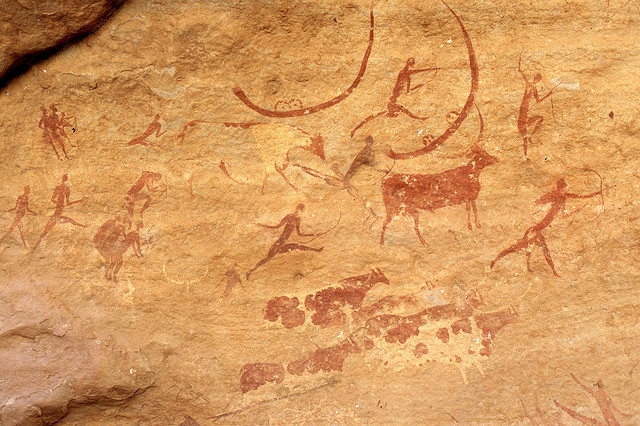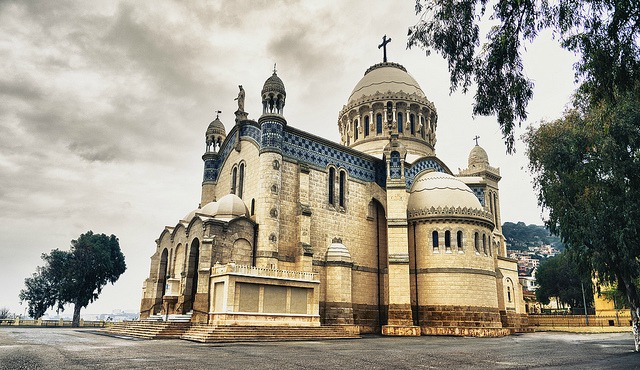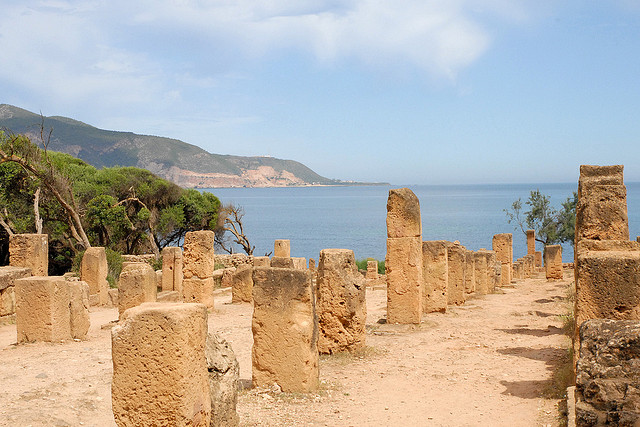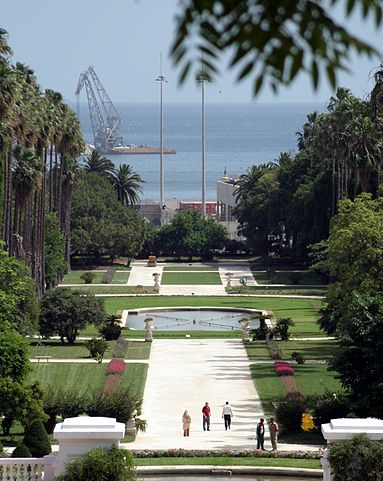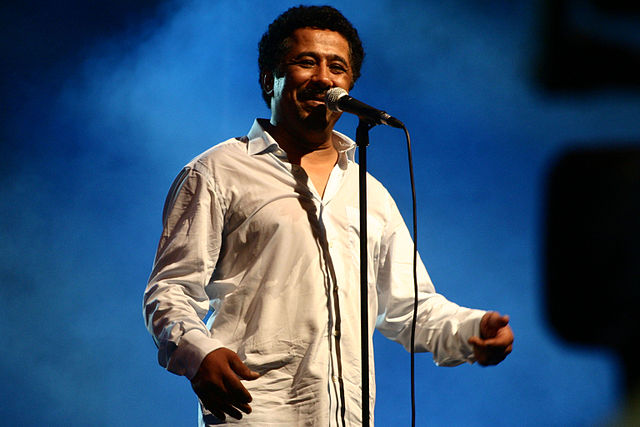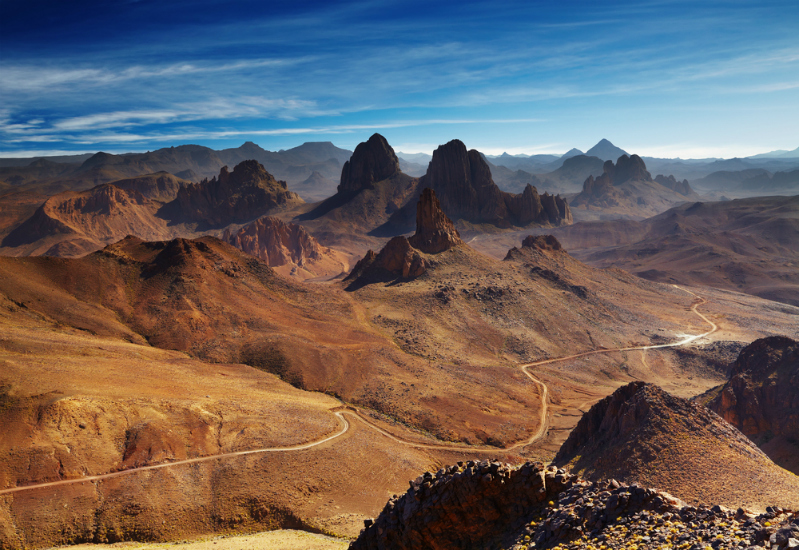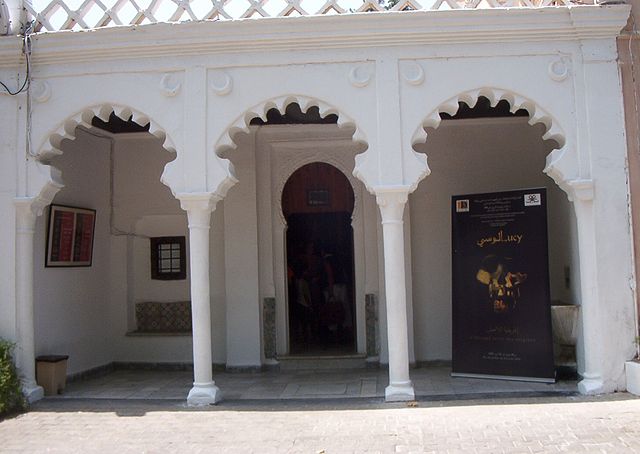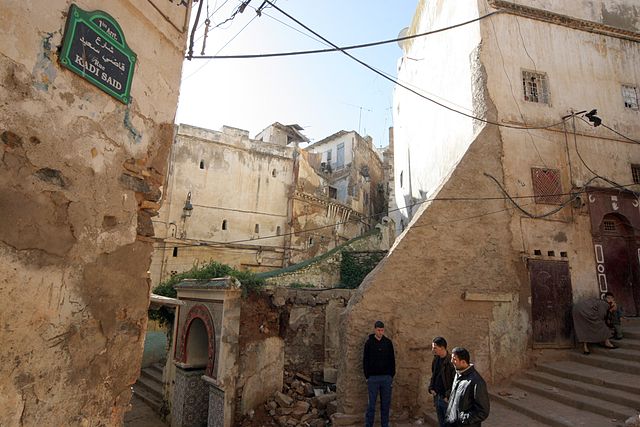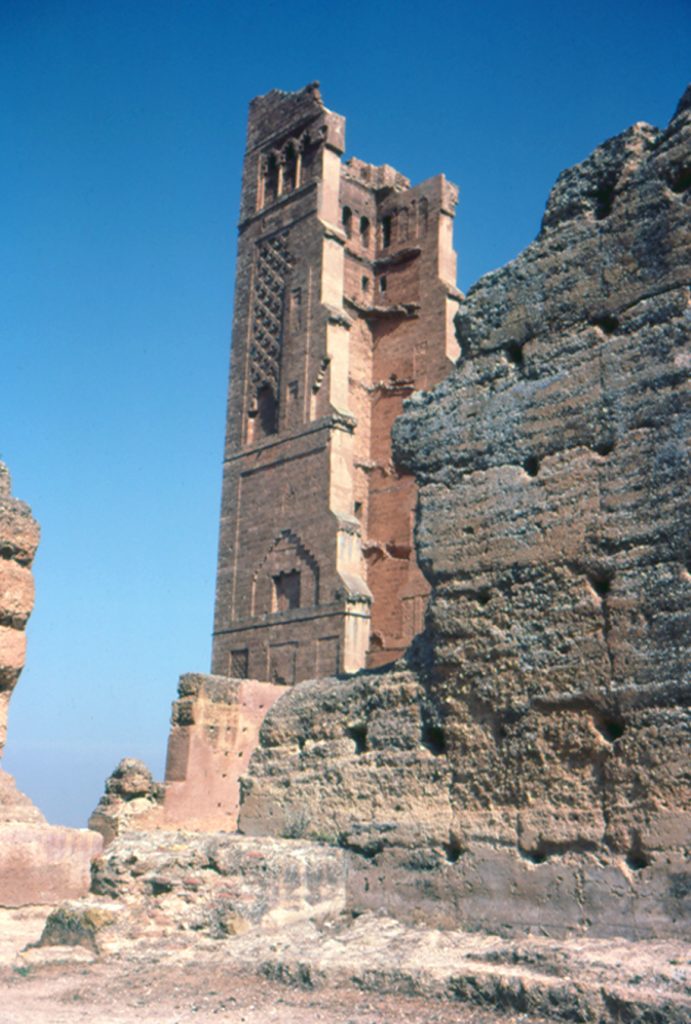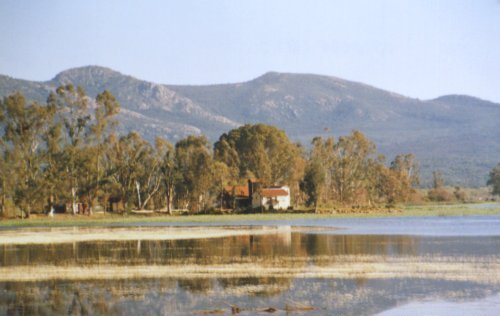Algeria is not as well known of an African tourist destination as it should be. It is the largest country in Africa and tenth largest in the world with thousands of years of history and an astounding mix of cultural influences from Berbers, Phoenicians, Romans, Tuaregs, Arabs, Ottomans, Europeans, and more. With the expansive Sahara and mountains in the south, Berber villages in the hilly center, and French-influenced cities along the Mediterranean Coast, Algeria has something for everyone. Largely escaping the tumult of the Arab Spring that swept through Tunisia, Libya, and Egypt, now is the time to visit. Here are 15 things to do in Algeria.
1) Discover prehistoric rock art in Tassili n’Ajjer
The UNESCO World Heritage Site of Tassili n’Ajjer National Park is the highlight of any visit to Algeria. Located in the deep south of the country over 1,800 kilometers (1,200 miles) from Algiers, it’s a day long bus journey or several hour flight from the capital. A landscape unlike any other awaits with sandstone peaks, rock arches, and Saharan montane woodlands. Meaning “plateau of rivers,” Tassili n’Ajjer once had much more water to sustain civilization.
2) Get spiritual in Notre Dame d’Afrique
Our Lady of Africa in Algiers is an incredible tribute to French Algeria, and is one of the greatest basilicas in all of Africa. While construction began in 1858, the cathedral was not completed until 1872 and is built in the Neo-Byzantine style. Harkening the importance of diversity and collaboration, inscribed in the apse is “Our Lady of Africa, pray for us and for the Muslims.”
3) Cosmopolitan Oran
Algeria’s second city, Oran is one of the most diverse cities in Algeria featuring all manner of accommodation, food from all over Algeria, Africa, and the world, theaters, cinemas, museums, gardens, and much more. Step back in time and explore the historic old center of Oran, its souq, and nearby seaside resorts. Conveniently, it can be reached by ferry from Spain and France, making a long weekend escape much easier to attain.
4) Punic ruins of Tipaza
The ruins of Tipaza are well preserved and sit on a hill overlooking the Mediterranean on Algeria’s northern coast. Formerly a Punic center of trade, it was turned into a Roman military camp to be used as a base to launch military incursions into neighboring territories. Destroyed and rebuilt several times over the last few thousand years, it was razed by the Arabs in the 600s and not resettled until the 19th century.
5) Relax and wander the Jardin d’Essai du Hamma
The Botanical Garden of Hamma is known the world over for being one of the greatest. Set over an expansive 140 acres of botanical garden and 50 acres of arboretum, the gardens were created in 1832 by the French Civil Intendant and interim governor. Set in Algiers, the gardens now feature over 1,200 species of plants and are a relaxing way to escape the buzz of the city.
6) Ghardaïa and the M’zab Valley
The crown jewel of the Ghardaïa pentapolis, Ghardaïa is a hilltop city amongst four surrounding towns. Another of Algeria’s UNESCO sites, it was constructed over 1,000 years ago. The entire surrounding M’Zab Valley is stunning and also falls under the purview of the UNESCO classification. With distinctive architecture and culture, Ghardaïa and the surrounding areas are an excellent way to experience ancient Algeria and life in the interior of the country.
7) Cut a rug getting down to Raï music
Raï is the music of Algeria. It is as important to Algerian culture as the people, food, and customs themselves. The style dates back to the 1930s, mixing traditional Bedouin folk music with European, African, and Arab music. Raï singers called cheb focus on social issues that feature modern and traditional instruments. Oran was the place where the style began and a great city to check out Raï acts, but the music can be found throughout the country.
8) Assekrem and the Hoggar Mountains
In the southeast of the country are the breathtaking Hoggar Mountains, near Tassili n’Ajjer. Sharing a similar landscape, the barren Sahara gives way to stone buttes, shrubby desert, and hidden oases. In nearby Assekrem is the hermitage of Charles de Foucauld, a French priest who lived for years amongst the Tuaregs in this desolate region and later beatified as a saint.
9) Hit the beaches
Algeria has some of the best beaches in North Africa. Tourists from Europe and beyond flock to the Mediterranean shores for pristine beaches and few tourists, not to mention cheap prices. The eastern beaches on the Turquoise Coast feature olive and cypress trees, French architecture, and fresh seafood that will make you question what continent you’re on. With plenty of options for boating and other aquatic activities, the beaches here will make you wonder why you’ve been going anywhere else.
10) Learn your history at the Bardo Museum
Established in the 1920s, the Bardo National Museum of Prehistory and Ethnology is the best museum in all of Algeria. Housed in a beautifully restored villa once owned by a wealthy family, the different rooms feature exhibits on Algeria’s history, culture, and art. The gardens on the grounds and open courtyard are relaxing places to take it all in before heading back to the bustling streets of Algiers.
11) Step back in time at the Kasbah of Algiers
The term Kasbah refers to the citadel or fortress and walled city or medina of many old Islamic cities and towns. Wander through tiny alleyways where almost no light pervades, pop into antique shops and find treasures from centuries past, or just sip some tea in a streetside café and people watch. The beautiful 18th century Ketchaoua Mosque is worth a visit. The Kasbah is in need of major renovations, so it’s best see it now before it changes or is buried under scaffolding.
12) Scale the ramparts of Beni Hammad Fort
The fortified city of Beni Hammad was the capital of the Hammadid dynasty over 1,000 years ago. A few hours south of Algiers, the surrounding Hodna Mountains make a dramatic backdrop and are also great for hiking. Featuring seven kilometers of stone walls, gardens, pavilions, and even an old pool, the Beni Hammad Fort makes for a perfect day trip.
13) Tlemcen
Set near the border with Morocco, the city of Tlemcen (also the capital of Tlemcen Province) is known for its history, culture, and handicrafts. Mixing Arab, Andalucian, Berber, and Islamic cultures and styles, the town is a big hit with tourists and its cool mountain setting makes it an ideal place to spend a few days exploring its old streets and numerous merchants that sell everything from carpets, leatherwork, and carvings.
14) Get back to nature in El Kala National Park
Far on the other side of the coast on the border with Tunisia is El Kala National Park. This beautiful national park and biosphere features forests, lakes, hills, and backs up to the Mediterranean Coast. With over 100 species of mammals and birds, the park is ideal for wildlife watching, hiking, camping, and is one of the best ways to get back in touch with nature and appreciate the stunning natural landscapes of Algeria and North Africa.
15) Conquer time and history in the ruins of Djemila
If you’re heading back from El Kala, a stop in Djemila is compulsory. Known as one of the best preserved Berbero-Roman ruins in all of North Africa, Djemila is yet another one of Algeria’s many UNESCO World Heritage Sites. With an amphitheatre, fora, basilicas, houses, streets, arches, and pillars, Djemila is unique for its adaptation of Roman city planning to a mountainous setting.
Want to discover the finer side of Africa? Sign up for our weekly newsletter.
